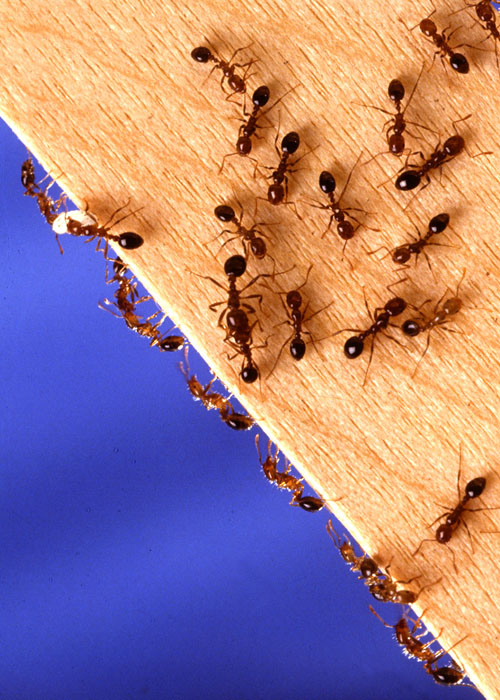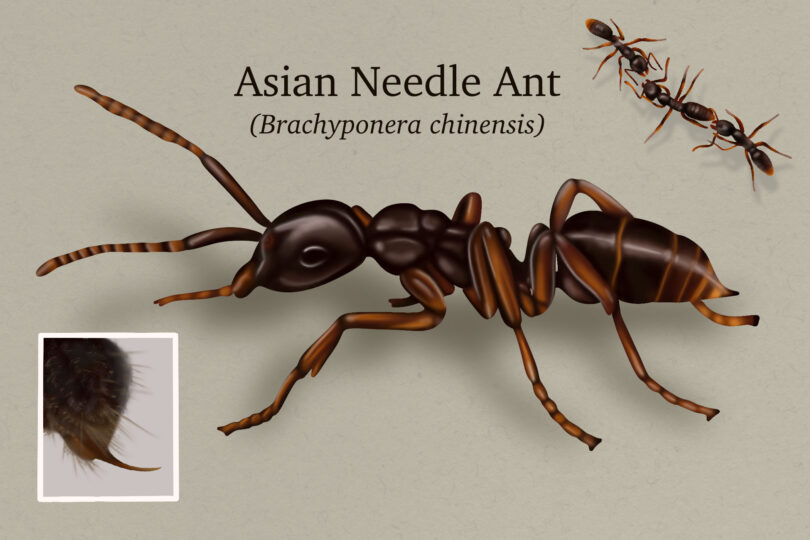Fire ants can ruin picnics and football games. Treating fire ant colonies in the fall can help edge out future colonies, lessening the likelihood they’ll steal your chips or nip at your toes.
“Fire ant colonies have been growing through the summer and have reached their peak size,” said Dan Suiter, a University of Georgia Cooperative Extension entomologist with the UGA College of Agricultural and Environmental Sciences.
“Attacking those colonies now will help next spring when they start to swarm again.” Fire ants are easier to kill in the fall, he said, for four main reasons.
First, they're more active. That makes it easier to treat them with fire ant baits. "You can use fire ant baits any time of the year," Suiter said. "But they're most effective when the ants are actively foraging for food."
Fire ants are most active in spring and fall, when daytime temperatures are between 70 and 85 degrees, he said. Actively foraging ants will pick up bait and carry it into the nest within the first hour or two. If the ants are inactive, the bait may not appeal to the ants by the time they find it.
Second, in the cooler weather of fall, fire ants aren't too deep in the ground. That makes them easier to kill with a mound-drench, granular, dust or aerosol contact insecticide. When you use those products, Suiter said, it’s critical to treat when the queen and brood are close to the surface.
Third, in the fall, you're treating when many fire ant colonies are very young. Fire ants mate all year long, but they’re most actively mating in the spring, he said. Mated queens fly away and establish new colonies. By fall, these colonies are well-established but still fairly small.
"Quite often, you don't even know they're there," he said. "But if you don't treat them, they'll become the big mounds you see next year."
How do you treat for fire ants if you don't know where they are?
Broadcasting fire ant bait is the first step in the ongoing program Suiter recommends. Use fresh bait, he said, and apply it using the label directions. Never apply bait using a speader that’s been used to spread fertilizer. Fertilizer can contaminate the smell of the bait. Use only a new spreader, dedicated only to the use of spreading fire ant bait.
Treat individual problem mounds with an approved contact product. Be sure to follow directions carefully. Misuse of pesticides, like fire ant control products, is a violation of federal law.
“A lot of misuse comes from homeowners who think that what they put out isn’t strong enough to kill the ants,” he said. “But many of the chemicals are pretty much the same as professional chemicals.”
Homeowner misuse of insecticides has resulted in some active ingredients, like bifenthrin, showing up at unacceptable levels in lakes and streams.
“It’s a granular insecticide put on people’s yards,” Suiter said. “With overuse, particularly by homeowners who think more is better, it’s winding up in lakes and streams.”
Fourth, and the one thing that makes fall the single best time to treat fire ants, Suiter said, is that it's followed by winter. Extreme cold is tough on fire ants. This makes baits even more effective in the fall.
Baits take a long time to work. They weaken colonies and make them less able to respond to the challenges of winter weather.
Young colonies are especially vulnerable, Suiter said, because they don't have many workers. So they can't respond very quickly to the need to escape freezing temperatures.
The networked tunnels of a fire ant mound are constantly collapsing, Suiter said. Moving deeper into the ground requires a lot of work. Anything you can do to reduce the number of ants available to gather food and maintain the mound structure makes the colony less able to survive winter weather.
"Winter is an ally in controlling fire ants," Suiter said. "Reducing their numbers in the fall can help push them over the edge in the winter."








